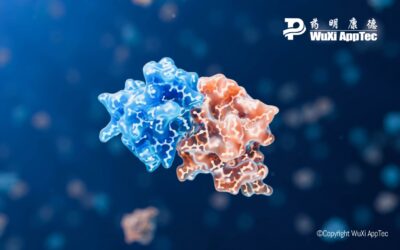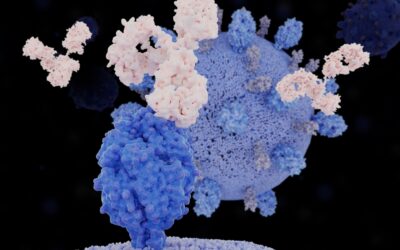Lead optimization in the world of drug development is a multifaceted process. It is a crucial part of discovery pharmacology and toxicology, as such, is used to identify and advance the most promising drug compounds. First and foremost, lead optimization aims to identify the drug metabolism and pharmacokinetic (DMPK) properties of compounds and assess how they metabolize within the human body. Second, but no less important, lead optimization is about safety. It helps developers understand the mechanisms and toxicity levels within drug compounds.
DMPK scientists, biologists, pharmacologists and medicinal chemists collaborate through in vitro, in vivo and in silico methods to achieve three distinct goals: 1) Identify and progress drug candidates with the best overall drug-like profiles; 2) Remove the most toxic drugs from the portfolio prior to human interaction; 3) Establish a clear and translational risk profile to enable clinical trial designs.
To further clarify the lead optimization process, we compiled answers to some of the most common questions we hear.
How Does Lead Optimization Inform Which Molecules Move Forward?
Lead optimization aims to enhance drug-like properties—i.e., solubility, permeability, metabolic stability and transporter effects—and reduce the potential toxicity of hit compounds. Drug-like properties can impact oral bioavailability, metabolism, clearance, toxicity and pharmacology and, as such, are important when trying to advance to pivotal preclinical studies.
“Insoluble and impermeable compounds can result in erroneous biological data and unreliable SAR (structure-activity-relationship) in enzyme and cell-based assays. Rapid metabolism by enzymes and high efflux by transporters can lead to high clearance, short half-life, low systemic exposure and inadequate efficacy,” states the National Center for Biotechnology Information (NCBI).
The explanation from the NCBI is a bit technical but, suffice it to say, lead optimization has the potential to reduce errors, improve reliability and maximize compound efficacy.
Drug developers have traditionally used characteristics like a compound’s “flatness” or the numbers of aromatic rings or rotatable bonds it contains to determine its drug-like qualities. And while poor drug-like properties aren’t supportive for an aspiring compound, their presence doesn’t automatically disqualify a compound from becoming a drug. An overly rigid application of “poor” and “good” drug-like characteristics can lead to artificial distinctions between similar compounds and could lead to missed opportunities.
Compounds that show high drug-like properties or those that show similarity to marketed drugs can be rank-ordered based on their properties and then allocated resources according to their potential for advancement. But bear in mind, similarity between drugs and non-drugs is a good sign, but again, it doesn’t mean automatic success. Developers are often more interested in the properties that make drugs different from other compounds than the properties that make them similar—and a laboratory testing partner can help simplify this understanding. The earlier teams understand drug-like property information, the more resources they can save and the better decisions they can make.
At the end of the day, lead optimization determines whether a compound could feasibly advance to in human trials. It helps determine if (and how well) a potential drug can be:
- Absorbed into the circulatory system;
- Distributed to the site of action;
- Metabolized and efficiently excreted from the body;
- Less possibility of causing drug-drug interaction either served as perpetrator or victim.
The components that will impact absorption, distribution and metabolization the most are the in vitro/in vivo relationship, species difference, pharmacokinetic (PK) and pharmacodynamic (PD) relationship/modeling, human PK/dose prediction and drug-drug interaction.
How Does Lead Optimization Impact Toxicology and Pharmacology?
Lead optimization research can provide useful information for both toxicology and pharmacology in preclinical studies. The PK-PD relationship can optimize the pharmacology study design and predict human clinical efficacy. Scientists can also use the PK and metabolism results to guide toxicological testing system selection.
The entire lead optimization stage can last up to two years, but developers should start screening for leads early on. Incorporating DMPK lead optimization into hit-to-lead (H2L) screening is common and will tell you how much potential a specific compound has. H2L happens during early discovery and uses high throughput screening (HTS) to identify promising lead compounds without subjecting molecules to the full optimization process. HTS allows laboratories to test thousands of compounds each day and thus presents a quick and cost-effective option.
What Are Some Common Challenges Faced During Lead Optimization?
Like any drug development methodology that includes multiple layers of chemical analysis and is destined for human use, lead optimization is deliberate, cautious and not without its challenges.
H2L optimization is critical in determining successful drug development, but the process can create some hurdles. Chemists will often seek to improve the binding affinity between molecules and maximize in vitro potency. But doing so can lead to compounds with higher molecular weight (MW values) and poorer olubility levels (i.e., lipophilicity). This “molecular obesity” can bring about undesirable physicochemical and pharmacokinetic properties and increase the attrition rate for promising drug candidates.
A compound’s ability to dissolve in a solvent and create a homogenous mixture is one of the most important parameters to achieve the desired pharmacological response. Compounds with poor solubility may precipitate—i.e., be deposited in solid form—in biological test systems and cause inaccurate results. Limited solubility can also cause low oral bioavailability and thus limit absorption in the gastrointestinal tract, which could adversely affect humans.
To combat these potential problems, developers should consider early-stage solubility testing. The solubility result can help modify molecular structure and optimize your study design. It is also possible to enhance compound solubility using biological buffers—i.e., organic substances that maintain a constant pH over a given range—and perform formulation screenings for in vivo PK studies.
Improving Success and Safety with Lead Optimization
Lead optimization can reduce attrition rates significantly during the discovery phase. It connects with both pharmacology and toxicology to identify and progress drug candidates, removes the most toxic ones and establishes risk profiles that will ultimately impact clinical trial designs. Most importantly, lead optimization is especially useful to predict human dose regimes and monitor adverse effects caused by drug-drug interaction.
For drug developers unequipped to achieve lead optimization goals by themselves, collaborating with a quality laboratory testing partner will be extremely valuable. The right partner can help developers meet the necessary safety protocols, mitigate future risks and save time and money.
Learn more about WuXi AppTec’s DMPK services, experts and track record of success.
As a global company with operations across Asia, Europe, and North America, WuXi AppTec provides a broad portfolio of R&D and manufacturing services that enable the global pharmaceutical and life sciences industry to advance discoveries and deliver groundbreaking treatments to patients. Through its unique business models, WuXi AppTec’s integrated, end-to-end services include chemistry drug CRDMO (Contract Research, Development and Manufacturing Organization), biology discovery, preclinical testing and clinical research services, helping customers improve the productivity of advancing healthcare products through cost-effective and efficient solutions. WuXi AppTec received an AA ESG rating from MSCI for the fourth consecutive year in 2024 and its open-access platform is enabling around 6,000 customers from over 30 countries to improve the health of those in need – and to realize the vision that “every drug can be made and every disease can be treated.”


